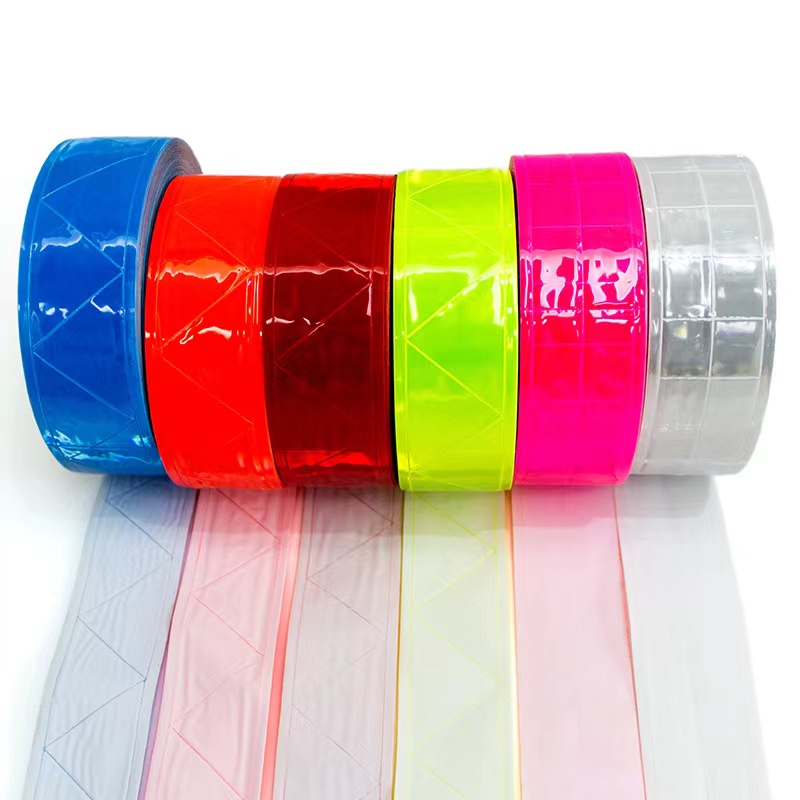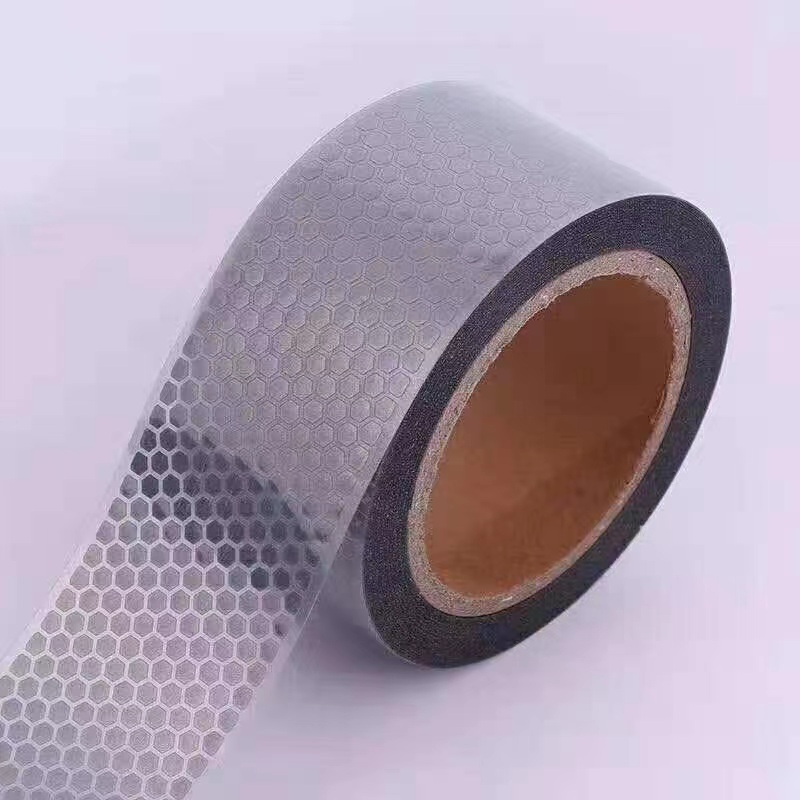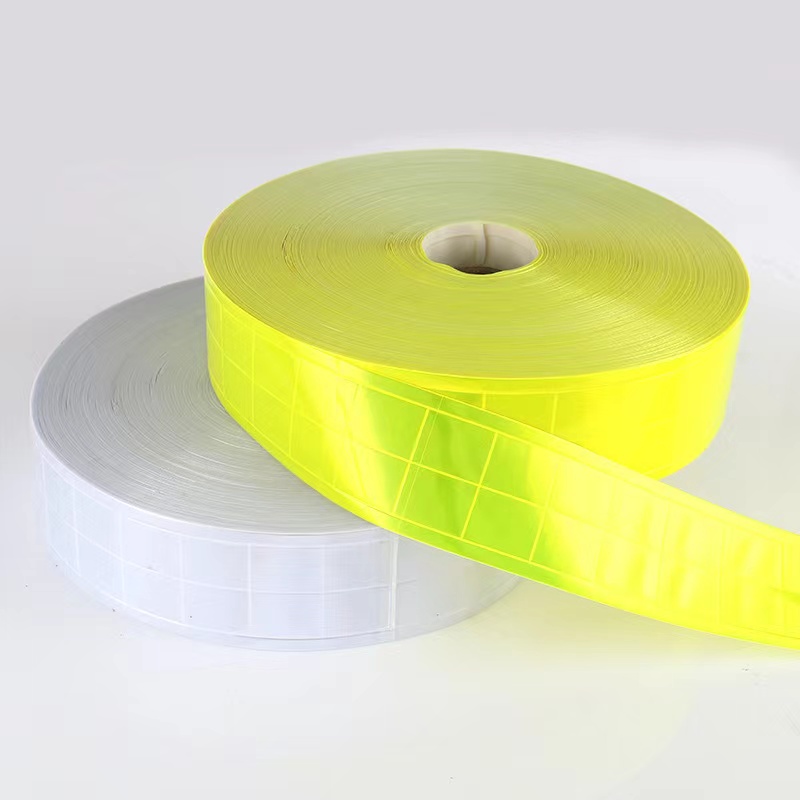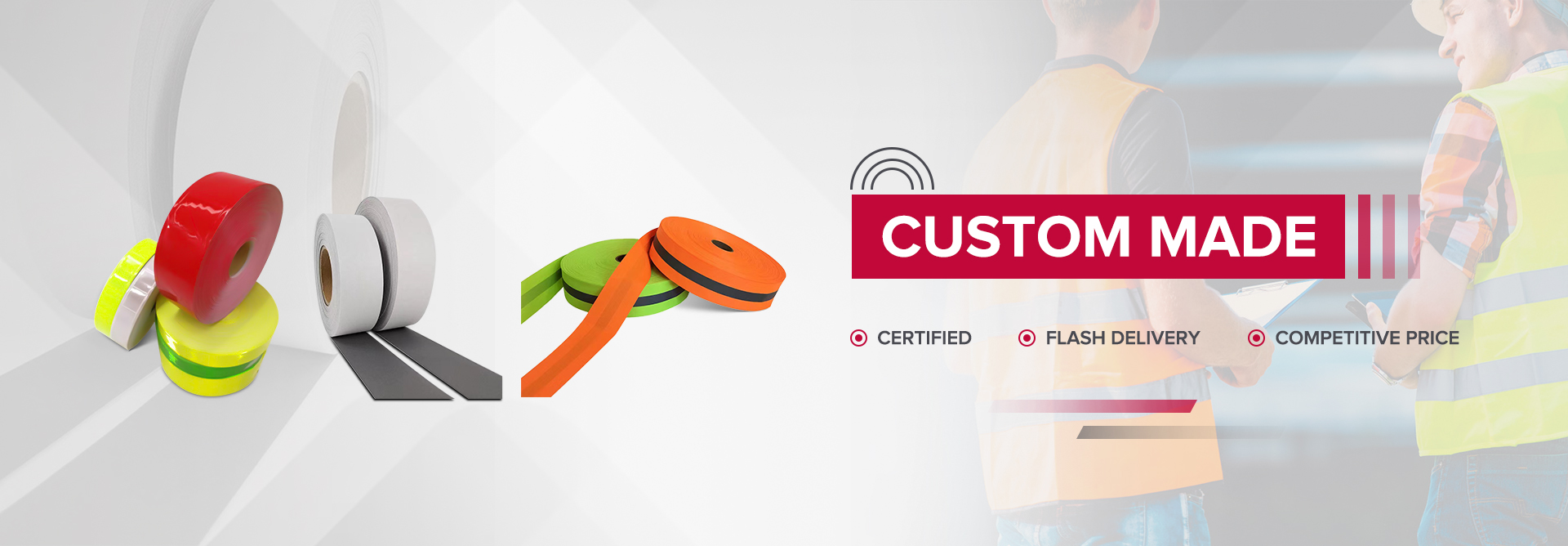I get contacted all the time with the question "Which reflective tape is the brightest?" The quick and easy answer to this question is white or silver microprismatic reflective tape. But brightness is not all that users are looking for in reflective film. A better question is "Which reflective tape is best for my application?". In other words, brightness is only one of the factors to consider when choosing a reflective tape. There are other very important factors to consider. These are color, flexibility, price, longevity, adhesion, contrast, competitive lighting and light dispersion. It is because of these other factors that many different types and colors of reflective tape are produced. In this article, I would like to introduce different types of reflective tape and list their basic characteristics. The main concern is brightness, but I want to sum up other factors as well.
In each section below you will see how the brightness or reflectivity of a particular tape is affected by the type (the construction of the tape) and the color. The brightest tape in each category is always white (silver).
Engineering grade retro reflective tape is a class 1 material with retro reflective glass beads. It's a thin, flexible material that's molded in a single layer to prevent delamination. It comes in the widest range of colors and is also the cheapest and most popular of all tapes. It is used in a variety of applications where the audience is fairly close to the tape itself. Engineer grades are divided into standard grades and flexible grades. Flexible grades can be stretched for applications where compliance is important. If you have rough, uneven surfaces to mark, then this is the tape you need. The material can be cut into letters, shapes and numbers by computer, so it is widely used in emergency vehicles and signs. It is often used in combination with a lighter background so that both colors are reflective but still achieve contrast. Because it is a glass bead ribbon, it can disperse light at a wide angle. Recommended for applications where the viewer is within 50 yards of the tape.
High-strength Type 3 tape is made by laminating layers together. The high refractive index glass beads are housed in small honeycomb cells with an air space above them. This arrangement makes the tape brighter. While still thin, this tape is a bit stiffer than engineer-grade tape. It's perfect for smooth surfaces and about 2.5 times brighter than engineering grade. This tape is used in applications that require the viewer to view the tape from a moderate distance. It is more expensive than engineering grade but less expensive than prism film. The tape also disperses light at wide angles. This, combined with the tape's increased reflectivity, makes it illuminated by the viewer more quickly than other tapes. It is used in creating sign backgrounds, wrapping bollards, marking loading docks, making gates reflective, and other similar applications. Recommended for applications where the viewer is within 100 yards of the tape or in areas with competing lighting.
Non-metallized micro prismatic tapes are produced by laminating a layer of prismatic film to a honeycomb grid and white backing. It is similar in construction to high-strength glass bead tape, but the air chamber is located below the prism. (Air Backed Micro Prisms) The white backing makes the tape colors more vibrant. It's a bit more expensive than high strength, but less expensive than metalized microprisms. Best applied to smooth surfaces. This film can be seen from farther away than high strength or engineering grades, making it ideal for applications where the viewer is farther away from the tape.
Metallized Micro Prismatic Reflective Tape is the best in its class when it comes to durability and reflectivity. It's molded in one layer, which means you never need to worry about delamination. This is especially useful when using tape in dynamic environments where it can be abused. You can hit it and it will still reflect. It is made by applying a mirror coating to the back of the microprism layer, followed by an adhesive and release liner on the back. It's more expensive to make, but worth the effort. This material can be used in all applications and where the viewer is more than 100 yards from the tape. In most cases, this reflective tape can be seen up to 1000 feet away.



Post time: Jun-30-2023



